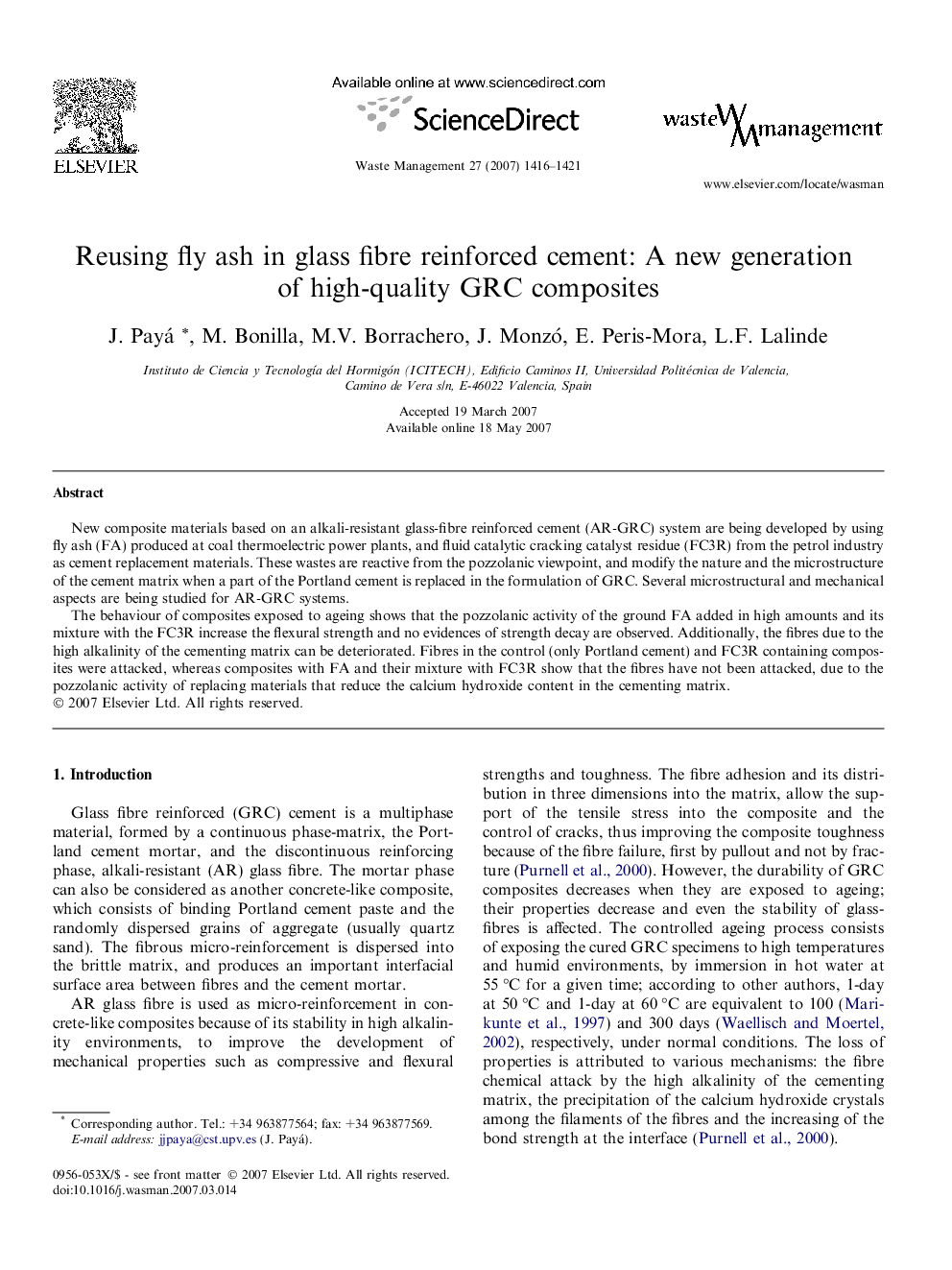| Article ID | Journal | Published Year | Pages | File Type |
|---|---|---|---|---|
| 4473449 | Waste Management | 2007 | 6 Pages |
New composite materials based on an alkali-resistant glass-fibre reinforced cement (AR-GRC) system are being developed by using fly ash (FA) produced at coal thermoelectric power plants, and fluid catalytic cracking catalyst residue (FC3R) from the petrol industry as cement replacement materials. These wastes are reactive from the pozzolanic viewpoint, and modify the nature and the microstructure of the cement matrix when a part of the Portland cement is replaced in the formulation of GRC. Several microstructural and mechanical aspects are being studied for AR-GRC systems.The behaviour of composites exposed to ageing shows that the pozzolanic activity of the ground FA added in high amounts and its mixture with the FC3R increase the flexural strength and no evidences of strength decay are observed. Additionally, the fibres due to the high alkalinity of the cementing matrix can be deteriorated. Fibres in the control (only Portland cement) and FC3R containing composites were attacked, whereas composites with FA and their mixture with FC3R show that the fibres have not been attacked, due to the pozzolanic activity of replacing materials that reduce the calcium hydroxide content in the cementing matrix.
